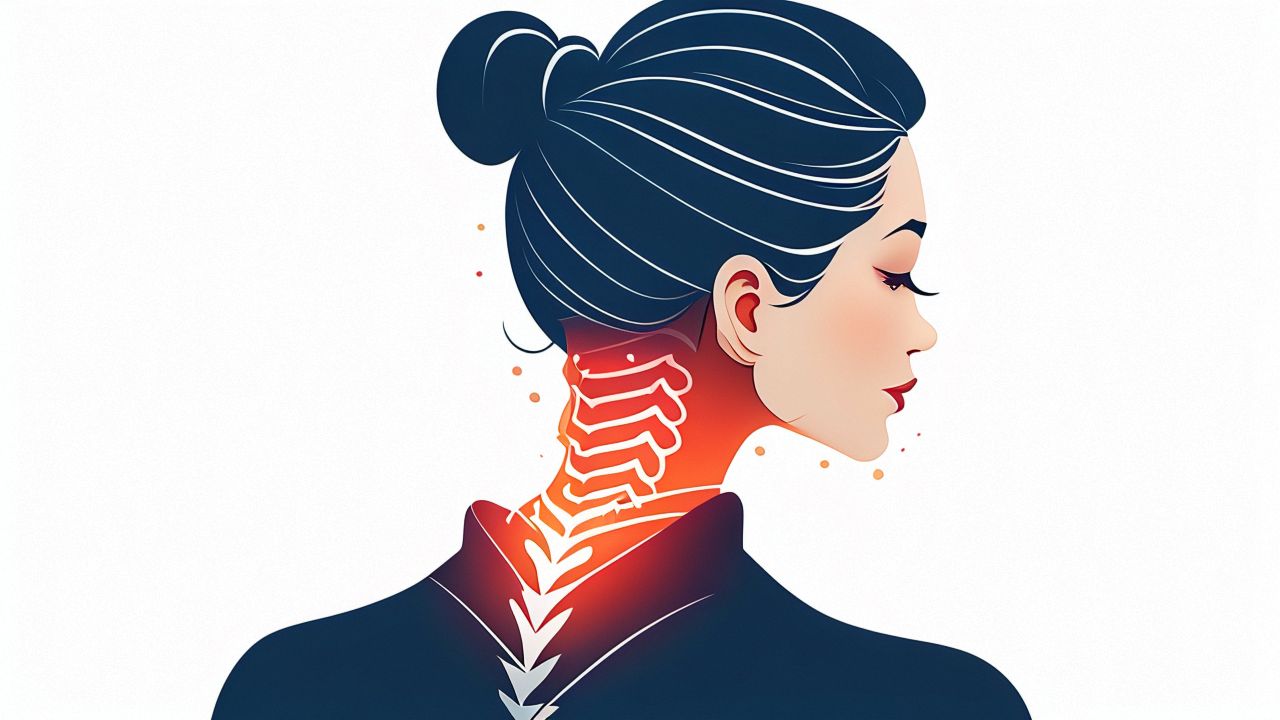Prevent cerebral thrombosis by managing risk factors and adopting a healthy lifestyle
Cerebral thrombosis, or ischemic stroke, is a significant global health concern. According to the World Health Organization (WHO), stroke is the second leading cause of death worldwide, responsible for approximately 11% of total deaths. The burden of stroke is not evenly distributed across the globe, with higher incidence rates observed in low- and middle-income countries compared to high-income countries.
Factors that can contribute to the development of cerebral thrombosis
Cerebral thrombosis is the formation of a blood clot (thrombus) within a blood vessel in the brain, which can lead to a stroke. This occurs when a blood clot blocks the flow of blood to a part of the brain, depriving it of oxygen and nutrients. There are several factors that can contribute to the development of cerebral thrombosis:

- Atherosclerosis: This is the buildup of fatty deposits (plaques) on the inner walls of arteries, including those in the brain. These plaques can narrow the arteries and make them more prone to forming clots.
- Cardiovascular Diseases: Conditions such as atrial fibrillation (irregular heartbeat), heart valve problems, or a previous heart attack can increase the risk of blood clots forming in the heart and then traveling to the brain.
- Lifestyle Factors: Smoking, obesity, lack of physical activity, and an unhealthy diet can all contribute to the development of blood clots.
- Genetic Factors: Some people may have a genetic predisposition to forming blood clots.
- Medical Conditions: Certain medical conditions like diabetes, high blood pressure, and high cholesterol can increase the risk of cerebral thrombosis.
- Surgery or Injury: Major surgery or injury can sometimes lead to the formation of blood clots, which may then travel to the brain.
- Hormonal Changes: Hormone therapy, including oral contraceptives, can increase the risk of blood clots.
When a blood clot forms in a blood vessel in the brain, it can cause a stroke, which can lead to serious complications, including paralysis, speech difficulties, and even death. Treatment for cerebral thrombosis often involves medications to dissolve the clot or surgical procedures to remove it.
The symptoms typically develop suddenly and may include:
- Weakness or Paralysis: One side of the body may become weak or paralyzed, affecting the face, arm, or leg. This is often more pronounced on one side of the body.
- Numbness or Tingling: There may be a loss of sensation or a tingling feeling, usually on one side of the body.
- Difficulty Speaking or Understanding Speech: This can manifest as slurred speech, difficulty finding words, or an inability to understand what others are saying.
- Vision Problems: Vision may be affected in one or both eyes, leading to blurred vision, double vision, or even complete loss of vision in one eye.
- Dizziness or Loss of Balance: There may be a sudden onset of dizziness, loss of balance, or trouble walking, which can be accompanied by nausea or vomiting.
- Headache: A sudden, severe headache can occur, which may be described as the “worst headache of your life.”
- Confusion: There may be sudden confusion, disorientation, or difficulty understanding simple concepts.
- Loss of Consciousness: In some cases, there may be a sudden loss of consciousness or coma.
- Seizures: Rarely, seizures can occur as a result of cerebral thrombosis.
- Other Symptoms: Depending on the specific area of the brain affected, other symptoms may include difficulty swallowing, loss of control over bladder or bowel function, and changes in behavior or mood.
Symptoms of cerebral thrombosis can vary widely depending on the individual and the exact location and size of the clot. If you or someone you know experiences any of these symptoms, it is crucial to seek immediate medical attention, as prompt treatment can significantly improve outcomes.

Diagnosing cerebral thrombosis
Diagnosing cerebral thrombosis involves a series of medical tests and evaluations to confirm the presence of a blood clot in the brain and to rule out other potential causes of the symptoms. Here are the common steps and tests used in the diagnostic process:
- Medical History and Physical Examination: The healthcare provider will start by taking a detailed medical history and performing a physical examination. This includes asking about the symptoms, when they started, and any potential risk factors for stroke.
- Neurological Examination: A neurological examination will assess the patient’s mental status, vision, strength, sensation, coordination, and reflexes. This can help identify which part of the brain may be affected.
- Imaging Tests:
- Computed Tomography (CT) Scan: A CT scan of the brain is often the first imaging test performed. It can quickly show if there is bleeding in the brain or evidence of a recent stroke. However, it may not always show small or recent clots.
- Magnetic Resonance Imaging (MRI): An MRI can provide more detailed images of the brain and is better at detecting small clots and identifying the exact location of the stroke. It can also show the extent of brain tissue damage.
- Magnetic Resonance Angiography (MRA) or CT Angiography (CTA): These tests can visualize the blood vessels in the brain and identify any blockages caused by clots.
- Cerebrospinal Fluid (CSF) Analysis: In some cases, a sample of cerebrospinal fluid may be taken to check for signs of inflammation, infection, or bleeding.
- Blood Tests: Blood tests can help check for conditions that may contribute to the formation of blood clots, such as high cholesterol, diabetes, or clotting disorders.
- Carotid Ultrasound: This test uses sound waves to create images of the carotid arteries in the neck and can help identify plaque buildup or blockages.
- Echocardiogram: An echocardiogram can check the heart for blood clots, abnormal heart rhythms, or other heart conditions that may contribute to the formation of clots that travel to the brain.
- Transcranial Doppler (TCD): This test uses ultrasound to measure blood flow in the brain’s arteries and can help detect clots in the large arteries of the brain.
Based on the results of these tests, the healthcare provider can confirm the diagnosis of cerebral thrombosis and determine the best course of treatment. It’s important to note that time is critical in the diagnosis and treatment of cerebral thrombosis, as early intervention can significantly improve outcomes.
Thrombolytic drugs
Medications used to dissolve blood clots in the case of cerebral thrombosis are typically referred to as thrombolytic or “clot-busting” drugs. These medications work by breaking down the clot and restoring blood flow to the affected area of the brain. The most commonly used thrombolytic drugs for this purpose include:
- Alteplase (tPA): Alteplase, also known as tissue plasminogen activator (tPA), is the most widely used thrombolytic agent for ischemic stroke. It works by activating plasminogen to plasmin, which then breaks down the fibrin in the clot.
- Reteplase: Reteplase is another thrombolytic drug that can be used in certain situations. It is a recombinant plasminogen activator that works similarly to alteplase by breaking down the fibrin in the clot.
- Urokinase: Urokinase is an older thrombolytic agent that also converts plasminogen to plasmin, which then dissolves the clot. It is less commonly used today due to the availability of more effective and safer alternatives like alteplase.
- Tenecteplase: Tenecteplase is a newer thrombolytic agent that has been shown to be effective in breaking down blood clots. It is a modified form of alteplase and may have advantages in terms of ease of use and faster onset of action.
These medications are typically administered intravenously and must be given as soon as possible after the onset of stroke symptoms, ideally within the first few hours, to be most effective and to minimize the risk of complications. The use of thrombolytic therapy is carefully evaluated by healthcare professionals to ensure it is safe and appropriate for each individual patient, as there are risks associated with the use of these drugs, including the possibility of bleeding in the brain or other parts of the body.
Surgical procedures for the treatment of cerebral thrombosis
Surgical procedures for the treatment of cerebral thrombosis can vary depending on the location and severity of the clot, as well as the patient’s overall health and the stage of the stroke. Here are some common surgical interventions:
- Endovascular Thrombectomy: This is a minimally invasive procedure that involves threading a catheter through the blood vessels from a small incision in the groin up to the brain. Once the catheter is in place, a device such as a stent retriever or a suction device is used to capture and remove the clot. This procedure is often performed in conjunction with thrombolytic therapy and is typically done within a few hours to a few days after the onset of stroke symptoms.
- Carotid Endarterectomy: If the clot is located in the carotid artery in the neck, a carotid endarterectomy may be performed. This surgery involves removing the plaque buildup (atherosclerosis) from the inside of the carotid artery to restore normal blood flow to the brain. The surgeon makes an incision in the neck to access the carotid artery, clamps it off, opens it, removes the plaque, and then closes the artery with stitches or a patch.
- Cerebral Angioplasty and Stenting: In some cases, a cerebral angioplasty may be performed to open up a narrowed artery in the brain. A catheter with a balloon on the end is guided to the site of the narrowing, and the balloon is inflated to widen the artery. A stent (a small mesh tube) may also be placed in the artery to help keep it open.
- Craniotomy for Clot Removal: In rare cases, a craniotomy may be necessary to remove a large clot that cannot be accessed endovascularly. This is a more invasive procedure where a portion of the skull is removed to allow the surgeon direct access to the brain and the clot. The clot is then removed manually, and the skull is typically replaced and secured with plates and screws.
- Ventriculostomy: If the stroke has caused a buildup of pressure within the brain due to swelling or bleeding, a ventriculostomy may be performed. This involves placing a small tube (shunt) into one of the brain’s ventricles to drain excess cerebrospinal fluid and reduce pressure.
Each of these procedures carries its own risks and benefits, and the choice of procedure depends on the individual patient’s condition and the specific characteristics of the clot. The surgical team will carefully evaluate the patient and the clot’s location and characteristics to determine the most appropriate treatment.

The risks and benefits associated with the surgical procedures for cerebral thrombosis:
- Endovascular Thrombectomy:
- Benefits: This procedure can quickly restore blood flow to the brain, potentially minimizing brain damage and improving the chances of recovery. It is less invasive than open surgery and can often be performed under local anesthesia.
- Risks: Risks include bleeding in the brain, damage to the blood vessels, and the possibility of the clot breaking loose and traveling to another part of the body (embolization). There is also a risk of stroke during the procedure itself.
- Carotid Endarterectomy:
- Benefits: By removing the plaque from the carotid artery, this procedure can reduce the risk of future strokes. It has been shown to be effective in patients with significant carotid artery stenosis.
- Risks: Risks include bleeding, infection, nerve damage (which can affect speech, swallowing, or movement), and stroke during or shortly after the procedure. There is also a risk of the artery narrowing again over time.
- Cerebral Angioplasty and Stenting:
- Benefits: This procedure can immediately improve blood flow to the brain by opening up narrowed arteries. Stenting can help keep the artery open and reduce the risk of future blockages.
- Risks: Risks include the risk of stroke during the procedure, damage to the blood vessels, bleeding, and the possibility of the stent becoming blocked or dislodged. There is also a risk of the artery narrowing again around the stent (in-stent restenosis).
- Craniotomy for Clot Removal:
- Benefits: This procedure can be effective in removing large clots that cannot be accessed through less invasive means. It can provide immediate relief by restoring blood flow to the affected area of the brain.
- Risks: Risks include bleeding, infection, damage to brain tissue, and the risk of stroke during the procedure. There is also the risk of complications related to the removal and replacement of the skull bone.
- Ventriculostomy:
- Benefits: This procedure can help reduce pressure within the brain, which can alleviate symptoms and prevent further brain damage. It can be life-saving in cases of severe intracranial pressure.
- Risks: Risks include infection, bleeding, and the risk of the shunt becoming blocked or dislodged. There is also a risk of overdrainage, which can lead to other complications.
Each of these procedures requires careful consideration of the potential benefits and risks, and the decision to proceed with surgery is made on an individual basis after thorough evaluation by a multidisciplinary team of healthcare professionals. The patient’s overall health, the location and size of the clot, and the stage of the stroke are all factors that are taken into account when deciding on the most appropriate treatment.
Preventing cerebral thrombosis
Preventing cerebral thrombosis, or ischemic stroke, involves managing and reducing risk factors that can contribute to the formation of blood clots in the brain. Here are several strategies for stroke prevention:
- Control High Blood Pressure: High blood pressure is a major risk factor for stroke. Regular monitoring of blood pressure and taking medications as prescribed can help control it. Lifestyle changes such as reducing sodium intake, increasing physical activity, and maintaining a healthy weight are also important.
- Manage Diabetes: If you have diabetes, keeping blood sugar levels under control can reduce the risk of stroke. This includes taking medications as prescribed, following a healthy diet, and regular exercise.
- Lower High Cholesterol: High levels of LDL (“bad”) cholesterol can contribute to the buildup of plaque in the arteries, increasing the risk of stroke. Dietary changes, exercise, and medications can help manage cholesterol levels.
- Quit Smoking: Smoking increases the risk of stroke by damaging blood vessels and promoting the buildup of plaque. Quitting smoking is one of the most important steps you can take to reduce your stroke risk.
- Maintain a Healthy Weight: Obesity increases the risk of stroke. A balanced diet and regular physical activity can help achieve and maintain a healthy weight.
- Exercise Regularly: Regular physical activity can help lower blood pressure, improve cholesterol levels, and maintain a healthy weight. Aim for at least 150 minutes of moderate-intensity exercise per week.
- Eat a Healthy Diet: A diet rich in fruits, vegetables, whole grains, and lean proteins can help reduce stroke risk. Limiting saturated and trans fats, as well as sodium, is also important.
- Limit Alcohol Consumption: Drinking excessive amounts of alcohol can increase blood pressure and the risk of stroke. Limiting alcohol to moderate levels, or no more than one drink per day for women and two for men, is recommended.
- Manage Stress: Chronic stress can contribute to high blood pressure and other risk factors for stroke. Finding healthy ways to manage stress, such as through exercise, meditation, or counseling, can be beneficial.
- Monitor Atrial Fibrillation: If you have atrial fibrillation, a type of irregular heartbeat that can increase the risk of stroke, it’s important to take anticoagulant medications as prescribed to prevent blood clots.
- Seek Treatment for Sleep Apnea: Sleep apnea, a condition where breathing repeatedly stops and starts during sleep, is associated with an increased risk of stroke. Treatment can help reduce this risk.
- Stay Socially Active: Social isolation and loneliness have been linked to an increased risk of stroke. Staying socially active and connected can have protective effects.
By adopting these preventive measures, individuals can significantly reduce their risk of cerebral thrombosis and improve their overall health and well-being. It’s also important to work closely with healthcare providers to manage any existing health conditions and to receive personalized advice on stroke prevention.




